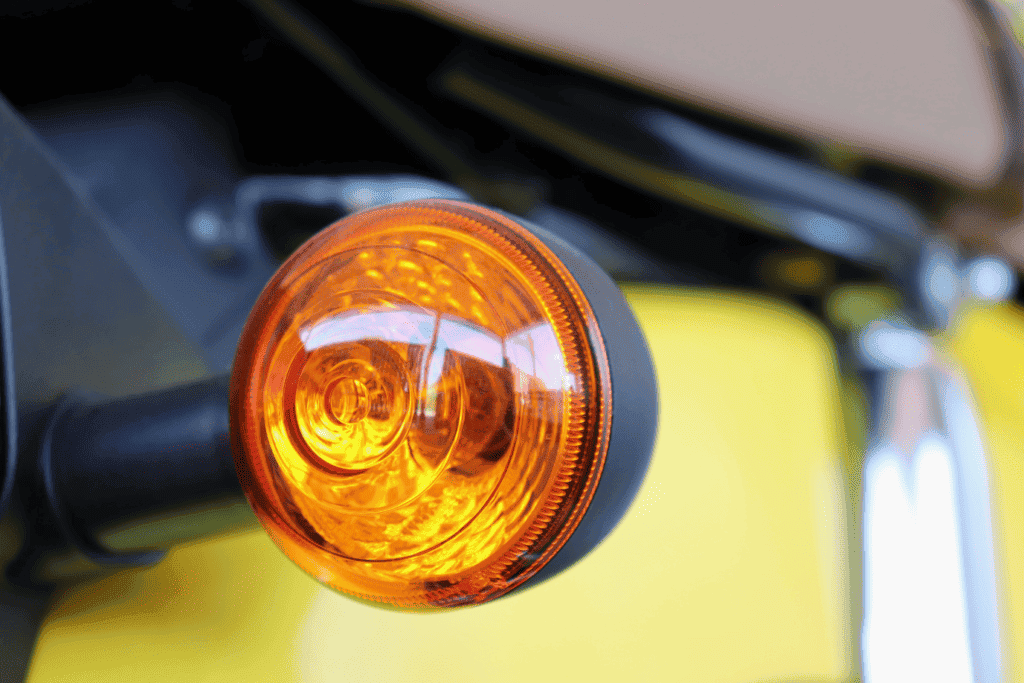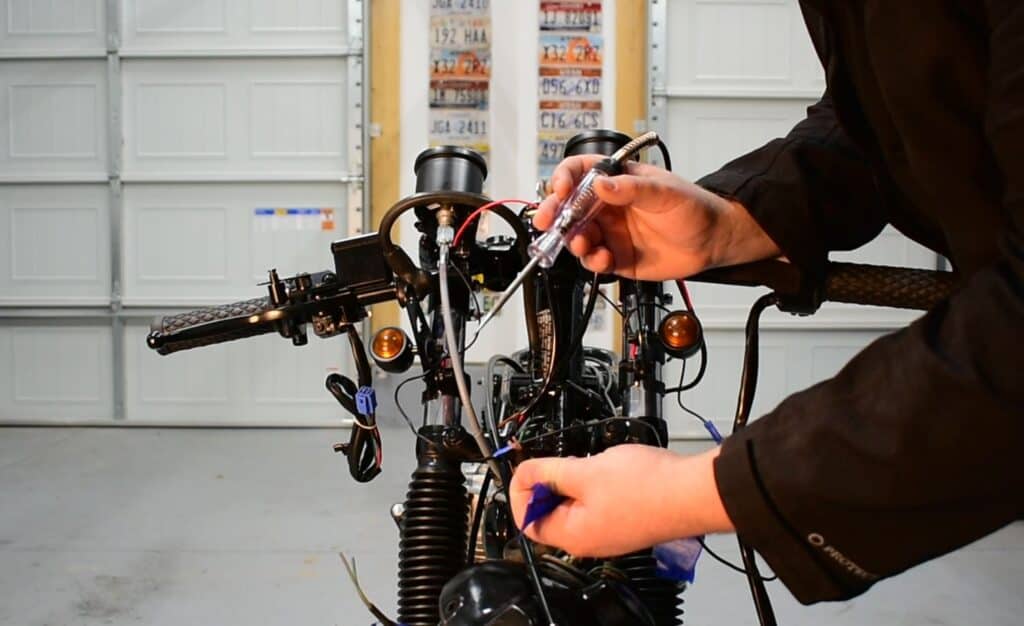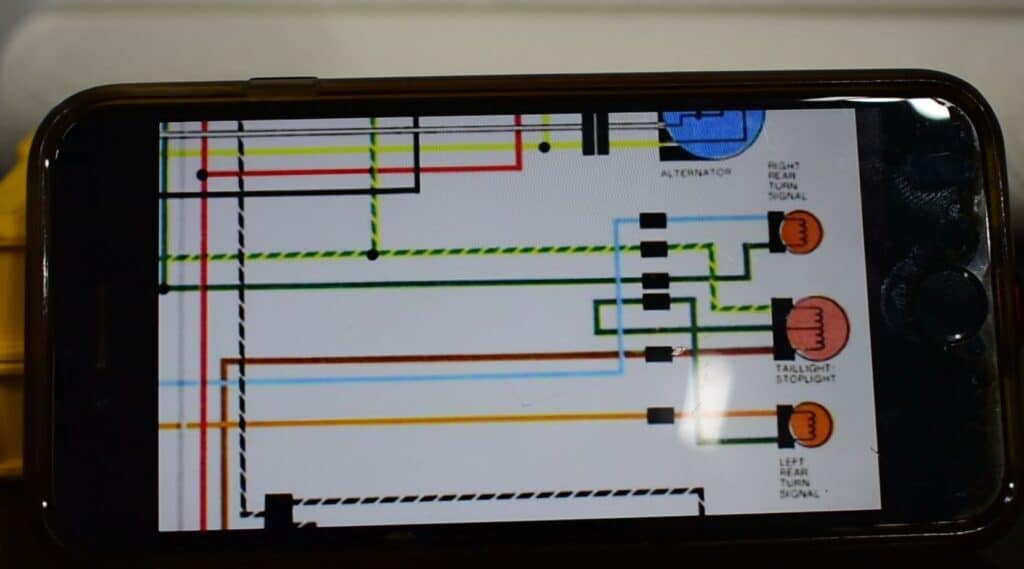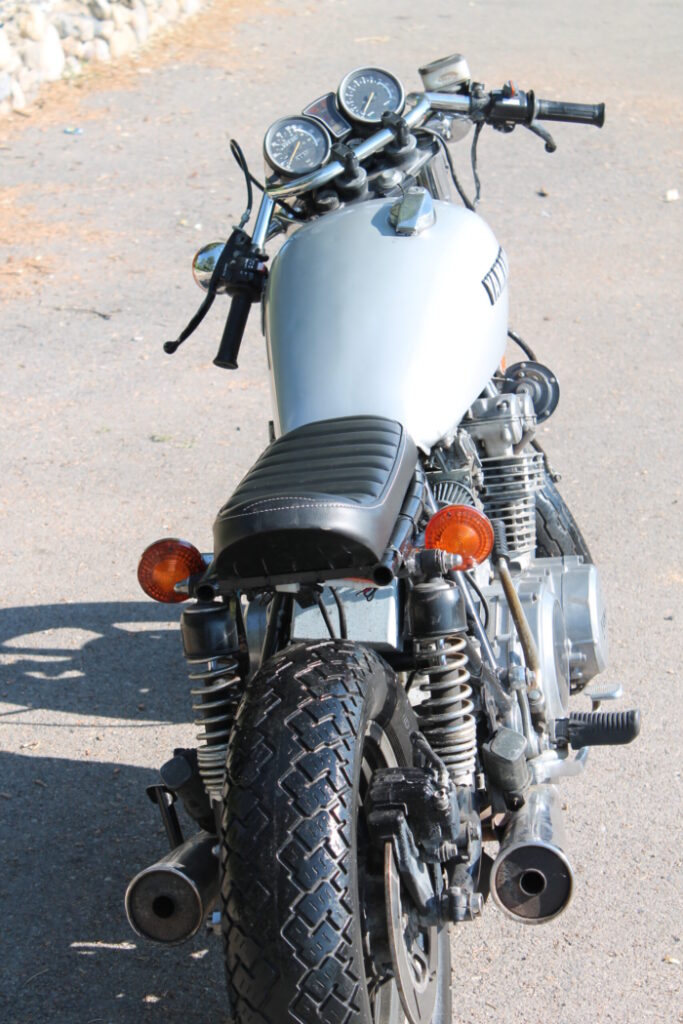
When driving a vehicle, whether it be a car or a motorcycle, it can be difficult to tell if your blinkers are actually working. You can’t usually see them yourself from where you are sitting. As a result, most people don’t know that their blinkers don’t work until someone tells them. This could be a friend or family member, it could be a random stranger letting you know, or it could be a police officer pulling you over. Regardless of how you find out that your blinker isn’t working, now you need to do something about it.
Why are my motorcycle blinkers not blinking? Your motorcycle blinkers may not be blinking because of a faulty bulb, a spent fuse, a faulty relay, or a bad turn signal switch. In less common scenarios, blinkers that don’t blink may also be caused by a bad ground connection, a weak battery, or a short somewhere in the wiring.
Fortunately, blinkers not working is something that is generally fairly simple to fix. The electrical circuit isn’t too complicated and most of the time it’s just a matter of the light bulb burning out and needing to be replaced. Regardless, it is still something that you will want to fix as soon as possible. Not only can you get a ticket for not using your turn signal, but you can put yourself and other drivers in danger by not having a turn signal while driving around.
What To Do If The Front Or Rear Blinkers Are Not Flashing
So, if you find out that any of your blinkers aren’t working on your motorcycle, what should you do? Depending on your mechanical aptitude, you can either try to diagnose and fix it yourself, or you can take it to a shop to be repaired. If you do take it to a shop, it will likely be a fairly cheap repair as these are more simple fixes. If you do want to diagnose and fix it yourself, only basic tools are required.
The most common thing to go bad is the light bulb itself. A motorcycle’s blinker is in a blinker assembly. You can pull the plastic cover apart to get access to the lightbulb directly. Make sure that connections are good and that the wiring plastic isn’t exposing the copper wire; this can cause a bad ground.
From there, you can check the bulb and ensure the bulb doesn’t look burnt out. If everything looks like it’s working fine, then it’s time to pull out some basic electrical tools and test the light bulb to ensure it’s working. We will go through how you can do this a little bit later.
If you have tested the bulb and the bulb is good but it’s still not working, then you probably have an issue with some other electrical component. At this point, it’s good practice to first check your fuse. If a fuse is blown, the bulb won’t turn on until it’s replaced. If the fuse is still good, then the issue could be your blinker relay.
The relay is what is responsible for making the light blink. You will want to locate the relay and test it to make sure that it’s working properly. You can also very easily change it out with a known good relay to see if that fixes your issue (if you don’t know how to test it).
If that still doesn’t fix your issue, there may be a problem with the actual turn signal switch that you use to turn them on. You will need to use your same electrical test equipment to determine if the switch is working as it should.
These are the main reasons why your blinkers are not turning on. A bad ground connection, a weak battery, or a short are also possible reasons for your blinkers not blinking, but they less common culprits.
What To Do If The Front Or Rear Blinkers Stays On Constantly

So maybe your blinker is turned on but it’s not blinking or perhaps your turn signal is off but the light is still on. What could be causing that? There are many similar issues to what we have already talked about that could be causing this issue.
The first thing that this could be caused by is an electrical short. This means that some wires accidentally got into contact with other electrical wires in places where they were not intended to be connected. This allows electricity to flow in the “newly created” circuit as opposed to the circuit that it was designed to use. This can allow electricity to bypass things like relays or switches and provide power to lights or actuators.
Chasing down an electrical short can be tricky. You will want to follow the electrical circuit from the battery clear back through the light and back to ground. Check to make sure there are no wrong or bad connections, frayed wires, or exposed wires in contact with metal components or surfaces. You can check to ensure that you have the appropriate voltage along the wire path as you follow it along until you discover the short.
Your relay could also potentially cause this issue. If the relay fails in a closed position (supplying power to the light), then your light won’t turn on. While your motorcycle may be trying to control the relay and make it cycle between open and closed, it may be stuck in the closed position. Testing the relay or replacing it entirely, will let you know if this is the issue.
Lastly, there could also be a problem with your blinker switch. It could be shorting, or it could have gotten stuck in a closed position as well. This will cause your motorcycle to act as if your blinker is supposed to be on and kick the light on.
What To Do If You Can Hear Your Flasher Relay Clicking, But No Bulb Is On
So, what if you can hear the relay clicking back and forth but you don’t actually see the bulb coming on? Most likely, this is just a bad light bulb. You can buy a replacement bulb for a couple of dollars and place it in to see if that fixes the issue, or you can test the bulb to make sure it is working properly. You can check continuity across the light bulb and ensure that you have the right voltage making it to the bulb.
This could also be an electrical issue. Since you can hear the relay cycling, then you know the circuit is working at least up until that point. If the bulb is good but still not turning on, then you have an electrical issue either somewhere from the relay to the bulb or from the bulb to ground. Follow the wires along while checking voltage to see if there are any issues. If you have the right voltage at the light and the bulb is good but it’s still not turning on, then your issue is probably a bad ground. Follow the ground wires along and check the connections there to ensure that they are good.
How To Use A Test Light And Wiring Diagram To Diagnose A Bad Blinker
It may seem daunting troubleshooting electrical issues on your motorcycle yourself, but I assure you that it really isn’t that hard. I’ve restored dozens of motorcycles and quickly learned on my first one how to fix electrical. I was surprised at how easy it was and I assure you that you can do it too.

One of the best tools for diagnosing electrical issues is a test light. This is just a simple device that generally has a small grabber or alligator clip coming off the end of it. You will also have a length of wire connected to a metal probe. In the handle of the test light itself is a light.
To use the test light, you can connect the grabber end to the circuits ground or negative side. You could even connect this to the frame of the motorcycle or some other metal such as bolts on the engine. Now you can touch the probe to different points or connections in the circuit. If there is a voltage difference between your ground connection and where you have your probe, the light will turn on. That means that you do have power right there.

By using a wiring diagram and this tool, you can fully diagnose your blinker circuit. You can check to make sure that you have power to your blinker relay. You can also make sure that power is making it out of your blinker relay. You can follow the wires along and make sure that they still have power. You can check to ensure that you have power at the light bulb as well.
Being strategic with these tools will allow you to diagnose your entire blinker circuit quickly and with ease. The wiring schematic will show you how things are routed and what color wires in connectors have the wires that you are looking for as you troubleshoot your motorcycle.

